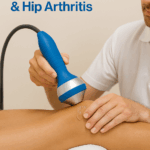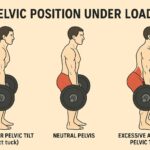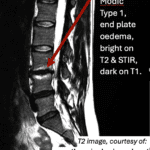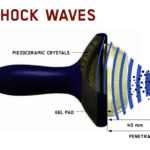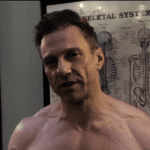Wimbledon Elbow: Understanding and Treating TENNIS (OR GOLFER’s) ELBOW
TO BOOK AN APPOINTMENT AT OUR CLINICS CALL: 0208 501 0937
TO BOOK ONLINE: CLICK HERE
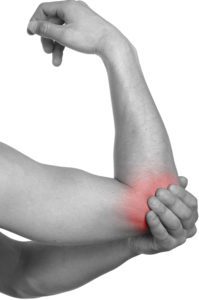 The elbow joint connects the upper arm (humerus) with the forearm (radius and ulna). This joint is critical for various movements, facilitated by tendons such as the triceps (for extending the arm) and the biceps (for bending the arm), as well as the flexor and extensor tendons, which control wrist movements. When subjected to excessive strain, these tendons can stretch, partially tear, or in severe cases, rip entirely from the bone. While minor injuries typically heal without much trouble, complications such as inflammation or tissue degeneration can lead to pain, weakness, and swelling. Let’s delve into the causes and treatments for this condition.
The elbow joint connects the upper arm (humerus) with the forearm (radius and ulna). This joint is critical for various movements, facilitated by tendons such as the triceps (for extending the arm) and the biceps (for bending the arm), as well as the flexor and extensor tendons, which control wrist movements. When subjected to excessive strain, these tendons can stretch, partially tear, or in severe cases, rip entirely from the bone. While minor injuries typically heal without much trouble, complications such as inflammation or tissue degeneration can lead to pain, weakness, and swelling. Let’s delve into the causes and treatments for this condition.
Understanding Lateral Epicondylitis
Damage to the extensor tendons of the elbow is commonly known as lateral epicondylitis or “tennis elbow.” This condition is characterized by pain on the outside or inside of the elbow where the tendons attach to the bone. It can result from overuse, like playing numerous tennis sets in one day, or from direct impact, such as hitting a tennis ball with sudden force. The injury is not limited to tennis players; activities like golf or repetitive motions such as washing windows can also trigger inflammation in the elbow tendons. This painful condition can take a long time to heal and significantly impact daily activities.
The Main Culprit: Extensor Carpi Radialis Brevis
The extensor carpi radialis brevis tendon is often the main tendon involved in tennis elbow. Despite various theories, the exact reason why this tendon sometimes fails to heal properly remains unclear. Here’s the basic explanation:
Tendons are composed of collagen fibers and specialised cells that produce essential molecules, growth factors, and other components to maintain tissue health. The collagen fibers form chemical bridges that allow the tendons to stretch and return to their original length. Proper tension is crucial for their function. When a tendon is overstretched—due to a tight grip on a tennis racket or repetitive strain—the fibers can develop micro- or macro-tears.
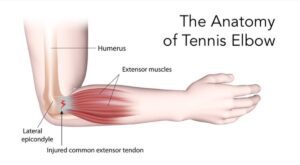
The Healing Process: When Things Go Wrong
Normally, these small tears heal naturally. The body responds with increased blood flow, bringing progenitor cells from stem cells to the injury site. These cells recruit macrophages to remove damaged fibers and initiate the repair process by laying down new collagen. When this process works well, the tissue heals without scarring. However, in the case of tennis elbow, this repair process often fails. The tearing at the tendon’s insertion point releases tension in the fibers, leading to uncontrolled degradation. This degradation triggers pain, and if left unchecked, can result in cell death and permanent tendon damage.
Treatment Strategies
Tennis elbow can either heal naturally or result in chronic pain and weakened scar tissue. Effective treatment aims to promote normal tissue healing. Traditional treatments like cortisone injections reduce inflammation. Around 50% of people receiving of cortisone injections (steroid injections for tennis or golfer’s elbow) feel great for up to a few months. However, steroid injections don’t stimulate healing, in fact they tend to do the opposite. By drastically reducing inflammation, whilst this can lead to good pain relief in the short term, it can also weaken the tissue. This tends to prolong complete recovery and increase risk of future injury due to weakened collagen fibres.
Alternative treatments include soft-tissue massage, which breaks down scar tissue and stimulates collagen production through cell stimulation. Gentle exercises can help new collagen fibers align correctly, promoting healthy tissue repair. Bracing the wrist to reduce tendon stretch or using an elastic band around the forearm can also help. However, immobilizing the joint can lead to scarring and weakened tissue.
Ice can alleviate pain and reduce inflammation, but since the core issue is tissue degeneration, additional stimuli are needed to remove dead tissue and promote healing. Treatment options include:
Manual: manual therapy like massage or shock wave therapy
Chemical / Injections: chemical stimulation through growth factor injections. These injections alter the cellular environment, recruiting progenitor cells and promoting healing. Studies have shown that growth factor injections, particularly those derived from blood platelets, are more effective than cortisone injections. Other research indicates that birth-tissue-derived growth factors can restore collagen fibers to their normal state.
Surgical: surgical removal of damaged tissue.
Options at Spine Plus
At Spine Plus we use the latest treatment technologies and evidence based protocols to treat injuries such as tennis and golfers elbow. This consists of:
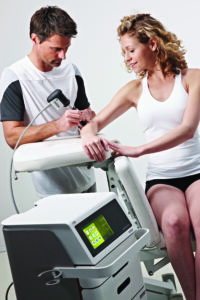 Phase 1: 4 to 8 sessions of Laser & Shockwave Therapy. In contrast to steroid injections Shockwave therapy works to reduce (neurogenic) inflammation and at the same time stimulate growth factors (such as “lubricin” and “scleraxis”) to stimulate healing and promote increased collagen strength and elasticity. Studies have clearly shown that the higher the pressure of the shock waves the stronger the healing response. The only issue here is that at high pressures (radial) shockwave therapy can be painful during the 5 to 10 minutes it takes to receive the necessary 2000 – 25000 shocks. Fortunately this is where we have Class IV laser technology to help. A five to ten minute dose of class 4 laser therapy followed by a rest period of 5 minutes has been shown to produce a sufficient analgesic (pain killing) response to allow double the (bar) pressure of shock waves compared to not receiving the laser. Clients often ask, whether the same effect can be achieved by taking simple pain killing medication, or having local anaesthetic injections. Unfortunately, this has the opposite in that the bodies healing reactions to the shockwaves are blocked by the (local) anaesthetic chemicals.
Phase 1: 4 to 8 sessions of Laser & Shockwave Therapy. In contrast to steroid injections Shockwave therapy works to reduce (neurogenic) inflammation and at the same time stimulate growth factors (such as “lubricin” and “scleraxis”) to stimulate healing and promote increased collagen strength and elasticity. Studies have clearly shown that the higher the pressure of the shock waves the stronger the healing response. The only issue here is that at high pressures (radial) shockwave therapy can be painful during the 5 to 10 minutes it takes to receive the necessary 2000 – 25000 shocks. Fortunately this is where we have Class IV laser technology to help. A five to ten minute dose of class 4 laser therapy followed by a rest period of 5 minutes has been shown to produce a sufficient analgesic (pain killing) response to allow double the (bar) pressure of shock waves compared to not receiving the laser. Clients often ask, whether the same effect can be achieved by taking simple pain killing medication, or having local anaesthetic injections. Unfortunately, this has the opposite in that the bodies healing reactions to the shockwaves are blocked by the (local) anaesthetic chemicals.
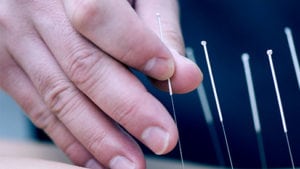 Phase 2: Gentle exercises +/- manual therapy: Following a course of shock wave therapy, the body has been kick started into a new phase of healing, the positive effects of the shockwave therapy last for several weeks and the full effects of the shockwave therapy will not be noticed for 6 weeks+. During this time, we will teach you gentle exercises to perform at home that will further promote healthy tissue repair. Also, during this period (approximately 3 weeks), additional manual therapy such as massage and acupuncture can encourage healthy tissue healing and relieve tight knots (trigger points) in the associated muscles can help reduce the stain on the tendon
Phase 2: Gentle exercises +/- manual therapy: Following a course of shock wave therapy, the body has been kick started into a new phase of healing, the positive effects of the shockwave therapy last for several weeks and the full effects of the shockwave therapy will not be noticed for 6 weeks+. During this time, we will teach you gentle exercises to perform at home that will further promote healthy tissue repair. Also, during this period (approximately 3 weeks), additional manual therapy such as massage and acupuncture can encourage healthy tissue healing and relieve tight knots (trigger points) in the associated muscles can help reduce the stain on the tendon
Phase 3: More advanced exercises: During the final 3 weeks of the 6 week post shockwave period, it will be necessary to perform more advanced strengthening exercises such as “eccentric loading” exercises. This is aimed at maximally stimulating the “tenocytes” within the tendons that are responsible for laying down extra collagen within tendon tissue.
The regime above has been shown to be effective in around 70% of cases. For those cases, that it doesn’t work for it makes sense to consider more invasive measures. We usually encourage patients to try “fenestrations” using either acupuncture needles or a syringe needle, often in combination with prolotherapy, as the first of these more invasive measures. This effectively causes micro-trauma within the tissue, restarting the injury and inflammatory reactions, this time with the intention that the body will heal effectively. For really stubborn cases that require more intervention, then surgery is the next step, and we would refer to one of the trusted orthopaedic surgeons we work with.
Conclusion
If not addressed promptly, tennis elbow can become a chronic and painful condition. Early and aggressive treatment to prevent tendon tissue death is essential. It’s always easier to heal an injury than to revive dead tissue.
TO BOOK AN APPOINTMENT AT OUR CLINICS CALL: 0208 501 0937
TO BOOK ONLINE: CLICK HERE

